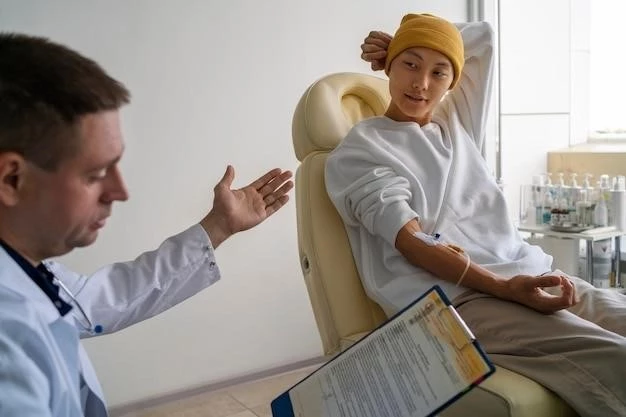Introduction
Urbach-Wiethe disease, also known as lipoid proteinosis, is a rare genodermatosis causing hyaline-like material deposition in tissues.
Overview of Urbach-Wiethe Disease
Urbach-Wiethe disease (UWD), also known as lipoid proteinosis, is a rare recessive genetic disorder characterized by hyaline-like material accumulation in various tissues, including the skin, mucous membranes, and central nervous system. The disease was first described by Urbach and Wiethe in 1929 and is associated with a multitude of cutaneous, mucosal, neurological, and psychiatric manifestations. The progressive deposition of an eosinophilic hyaline substance distinguishes UWD as a multisystem genodermatosis with significant implications for affected individuals.
Clinical Presentation
Individuals with Urbach-Wiethe disease can exhibit a range of skin, mucosal, neurological, and psychiatric symptoms, highlighting the diverse nature of this rare genetic disorder.
Characteristic Symptoms
Urbach-Wiethe disease presents with distinct skin and mucosal manifestations, including yellowish-white infiltrative deposits and hoarseness as an initial symptom. The genetic disorder also encompasses neurological and psychiatric abnormalities, contributing to its complex clinical profile.
Variability of Symptoms
The symptoms of Urbach-Wiethe disease can vary widely among individuals, encompassing a spectrum of dermatological, neurological, and psychiatric manifestations. This variability underscores the importance of comprehensive evaluation and personalized treatment approaches for affected patients.
Diagnosis and Treatment
Seeking a prompt and accurate diagnosis is crucial for managing Urbach-Wiethe disease effectively. Treatment strategies should be tailored to address individual symptoms and improve quality of life.
Diagnostic Procedures
Diagnosing Urbach-Wiethe disease typically involves a combination of clinical evaluation, histopathological examination of skin and mucosal samples, genetic testing to identify disease-causing mutations, and imaging studies such as MRI to assess neurological involvement. Collaborating with an interdisciplinary team of specialists is key for accurate diagnosis and appropriate management.
Management and Therapeutic Approaches
Proper management of Urbach-Wiethe disease involves a multidisciplinary approach that focuses on addressing individual symptoms and improving overall quality of life. Therapeutic strategies may include dermatological care, symptom-based treatments, and psychological support to assist patients in coping with the varied manifestations of the disease.
Genetics and Inheritance Patterns
Understanding the genetic basis of Urbach-Wiethe disease is crucial as it follows a recessive pattern of inheritance. Explore the genetic complexities and incidence rates associated with this rare disorder.
Recessive Genetic Disorder
Urbach-Wiethe disease is a rare recessive genetic disorder, characterized by mutations in the ECM1 gene, leading to the accumulation of hyaline-like material in various tissues. Understand the genetic underpinnings of this condition to guide diagnostic and management approaches effectively.
Incidence and Reported Cases
Urbach-Wiethe disease is a rare genetic disorder, with around 400 reported cases worldwide since its identification in 1929. The variability in symptoms among affected individuals underscores the need for a deeper understanding and tailored management strategies for this condition.

Neurological Impact
Understanding how Urbach-Wiethe disease affects the amygdala and its implications on neuropsychiatric manifestations is crucial. Explore the neurological aspects of this rare genetic disorder and their potential impact.
Effect on the Amygdala
Urbach-Wiethe disease causes bilateral degeneration of the amygdala, impacting fear processing, emotion regulation, and cognitive functions. Understanding this neurological effect is essential for tailored management strategies.
Neuropsychiatric Manifestations
Understanding the neuropsychiatric manifestations of Urbach-Wiethe disease is crucial due to its impact on emotions, fear processing, and cognitive functions. Explore the neurological and psychiatric complexities associated with this rare genetic disorder.
Dermatological Features
Explore the dermatological features of Urbach-Wiethe disease, including skin and mucosal infiltrations, and the impact of ECM1 gene mutations on symptom development.
Skin and Mucosal Infiltrations
The characteristic skin and mucosal infiltrations observed in individuals with Urbach-Wiethe disease are a result of yellowish-white deposits, impacting various tissues. Understanding the implications of these infiltrations is essential for comprehensive management approaches.
ECM1 Gene Mutation
The ECM1 gene mutation associated with Urbach-Wiethe disease leads to the deposition of hyaline-like material on the skin٫ mucous membranes٫ and internal organs. Understanding this genetic component is fundamental for diagnostic and treatment decisions.

Prognosis and Complications
Explore the long-term outlook and potential associated conditions of individuals with Urbach-Wiethe disease. Understand the prognosis and complications that may arise, guiding comprehensive care strategies.
Long-Term Outlook
Understand the long-term prognosis and potential associated conditions linked to Urbach-Wiethe disease. Explore the implications and complications for comprehensive care planning and management.
Potential Associated Conditions
Understanding the potential associated conditions linked to Urbach-Wiethe disease is vital for comprehensive care. Explore the varied manifestations and complications that may arise alongside this rare genetic disorder.
Ongoing Research and Future Perspectives
Stay informed about current studies and clinical trials focused on Urbach-Wiethe disease. Discover potential therapeutic advances and groundbreaking research that may shape the future management of this rare genetic disorder.
Current Studies and Clinical Trials
Follow the latest research initiatives and clinical trials focused on Urbach-Wiethe disease to explore potential therapeutic advancements and novel treatment approaches. Stay informed about the ongoing efforts aimed at improving the management of this rare genetic disorder.
Potential Therapeutic Advances
Based on the latest information available on the Internet, Urbach-Wiethe disease, also known as lipoid proteinosis, is a rare genodermatosis first described by Urbach and Wiethe in 1929. This autosomal recessive disorder is characterized by the deposition of hyaline-like material in various tissues, resulting in diverse clinical manifestations. The disease primarily affects the skin, mucous membranes, internal organs, and the central nervous system, showcasing its multisystem nature. With approximately 400 reported cases worldwide, Urbach-Wiethe disease presents a range of symptoms that vary among affected individuals, requiring personalized management strategies.Mutations in the ECM1 gene play a critical role in the pathogenesis of this condition, leading to the accumulation of hyaline-like material and distinctive skin and mucosal infiltrations. Understanding the genetic complexities associated with this rare disorder is crucial for accurate diagnosis and effective treatment approaches. Ongoing research and clinical trials aim to advance therapeutic options and enhance patient care, offering hope for improved management of Urbach-Wiethe disease and its associated conditions in the future.
